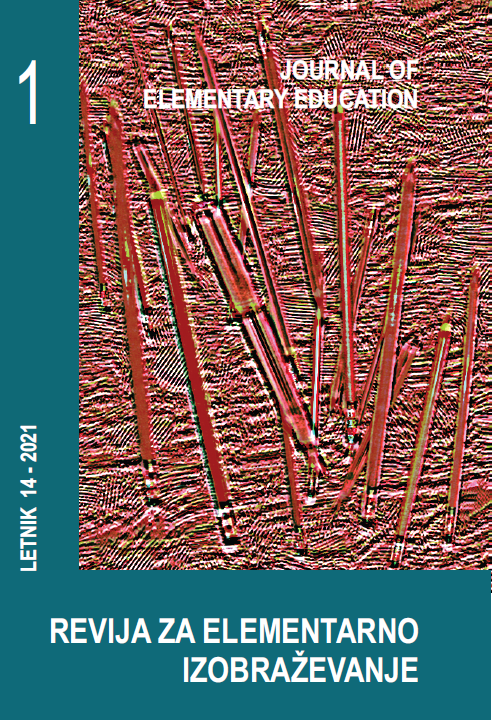Znanje učiteljev o zdravju otrok v osnovni šoli
Povzetek
Članek temelji na enem od raziskovalnih vprašanj obsežnejše študije, katere namen je bil oceniti učinek šolskih zdravstvenih programov v osnovnih šolah v Punjabu (Pakistan). Predstavlja enega glavnih delov raziskave o tem, koliko je šolski zdravstveni program pripomogel k izboljšanju znanja učiteljev glede petih pomembnejših zdravstvenih težav šolskih otrok, to so anemija, pomanjkanje železa, slaba prehrana, astma in težave z dihanjem ter sezonske bolezni. Podatki so bili zbrani s testom, pripravljenim za preverjanje znanja učiteljev o zdravju učencev in o učinkovitem odzivanju na zdravstvene težave. Raziskava je podala nekaj pomembnih ugotovitev, ki jih v nadaljevanju obravnavamo glede na obstoječo literaturo, nato pa ponudimo sklepe in priporočila za izboljšanje veščin učiteljev za dvig zdravja šolarjev.
Prenosi
Literatura
Ahmad, F., & Danish, S. H. (2013). School health services: A neglected sphere of influence in Pakistan. Journal of Pakistan Medical Association, 948-949. Retrieved from http://www.jpma.org.pk/full_article_text.php?article_id=4424
Arif, G. M., Nazir, S., Satti, M. N., & Farooq, S. (2012). Child Malnutrition in Pakistan: Trends and Determinants. PIDE, NUST. Islamabad: Pakistan Institute of Development Economics
Assefa, S., Mossie, A., & Hamza, L. (2014). Prevalence and severity of anemia among school children in Jimma Town, Southwest Ethiopia. 2. doi: https://doi.org/10.1186/2052-1839-14-3
Brennan, D. (Ed.). (2017). Is your child too sick for school? (WebMD) Retrieved from WebMD: https://www.webmd.com/children/guide/too-sick-for-school#1
Bundy, D., Shaeffer, S., Jukes, M., Beegle, K., Gillespie, A., Drake, L., . . . Wright, C. (1993). School-Based Health and Nutrition Programs. In D. T. Jamison, J. G. Breman, A. R. Measham, G. Alleyne, M. Claeson, D. B. Evans, . . . P. Musgrove (Eds.), Disease Control Priorities in Developing Countries (Second ed., pp. 3-5). New York: Oxford University Press and The World Bank. Retrieved from https://www.ncbi.nlm.nih.gov/books/NBK11783/pdf/Bookshelf_NBK11783.pdf
DAWN. (2017). 22.6m Pakistani Children Still out of School: Report. DAWN. Retrieved from https://www.dawn.com/news/1319300/226m-pakistani-children-still-out-of-school-report
Dilley, J. (2009). Research Review: School-based health interventions and academic achievement. Washington: Washington State Department of Health. Retrieved from https://here.doh.wa.gov/portals/14/Materials/130-083-HealthAcademic-en-L.pdf
Farooq, M. S. (2016). Causes of primary school students' dropout in Punjab: Primary school teachers' perspective. Journal of Elementary Education, 26(1), 2.
Filmer, D. (2003). Determinants of Health and Education Outcomes. The World Bank. The World Bank. Retrieved from http://siteresources.worldbank.org/DEC/600659-1109953265771/20383949/30377_32_Filmer_Determinants_of_Health_and_Education_OutcomesMay2003.pdf
Grant, R., & Brito, A. (2010). Chronic Illness and School Performance: A Literature Review Focusing on Asthma and Mental Health Conditions. New York: Children’s Health Fund. Retrieved from https://schoolhealthteams.aap.org/uploads/ckeditor/files/chronic-illness-and-school-performance.pdf
Jukes, M. C., Drake, L. J., & Bundy, D. A. (2008). School Health, Nutrition and Education for All: Levelling the Playing Field. London, UK: CAB International.
Luong, T. (2003). De-worming school children and hygiene intervention. International Journal of Environmental Health Research, 4.
Mesfin, F., Berhane, Y., & Worku, A. (2015). Anemia among Elementary School Children in Eastern Ethiopia. PLoS ONE, 10(4), 2. doi:10.1371/journal.pone.0123615
Miguel, E. & Kremeri, M. (2004). Worms: Identifying impacts on education and health in the presence of treatment externalities. Econometrica, 72(1), 5.
Mwanri, L., Worsley, A., & Masika, J. (2001). School and anaemia prevention: Current reality and opportunities—a Tanzanian case study. Health Promotion International, 16(4), 1-4. Retrieved from https://academic.oup.com/heapro/article/16/4/321/656748
National Health and Medical Research Council. (1996). Effective School Health Promotion: Towards health promoting schools. Health Advancement Standing Committee. Australia: Commonwealth of Australia. Retrieved from https://www.nhmrc.gov.au/_files_nhmrc/publications/attachments/hp1.pdf
PMU, & PHSRP. (2009-10). School Health Program. Retrieved from PHSRP: http://phsrp.punjab.gov.pk/shns.asp
Prasla, M., & Prasla, S. A. (2011). School health promotion – international perspectives and role of health care professionals. Journal of Ayub Medical College, 150-151. Retrieved from http://ayubmed.edu.pk/JAMC/23-1/Prasla.pdf
Ross, A. G., Papier, K., Luceres-Catubig, R., Chau, T. N., Inobaya, M. T., & Ng, S.-K. (2017). Poverty, Dietary Intake, Intestinal Parasites, and Nutritional Status among School-Age Children in the Rural Philippines. Tropical Medicine and Infectious Disease. doi:doi:10.3390/tropicalmed2040049
Seirawan, H., Faust, S., & Mulligan, R. (2012). The impact of oral health on the academic performance of disadvantaged children. American Journal of Public Health, 109(2). doi:10.2105/AJPH.2011.300478
Sisay, B. (2015). Assessment on the effects of child undernourishment on the academic performance of students in governmental elementary school: The case of “Atselibnedingel” governmental elementary school in Addis Ababa. Addis Ababa University. Retrieved from http://etd.aau.edu.et/bitstream/123456789/8103/1/16.Beiment%20Sisay.pdf
Taras, H. (2006). How Health Affects a Child's School Performance. (Newsroom, Producer) Retrieved from UC San Diego Health: https://health.ucsd.edu/news/2006/Pages/04_07m_Taras.aspx
UNESCO. (2000). A fresh start to health education. Learning Journal. Retrieved from http://www.unesco.org/education/tlsf/mods/theme_b/mod08.html?panel=5#top
UNESCO. (2012). Monitoring and Evaluation Guidance for School Health. Retrieved from http://www.unesco.org/new/fileadmin/MULTIMEDIA/HQ/HIV-AIDS/pdf/ENGLISH_M_E_Guidelines_for_web.pdf
UNESCO. (n.d). School Health Program: Teachers guide on school health program. Islamabad, Pakistan. Retrieved from http://unesco.org.pk/education/documents/publications/SHP- Guidelines_for_Teachers.pdf
WHO. (1997). Promoting Health through Schools. Geneva: World Health Organization. Retrieved from http://apps.who.int/iris/bitstream/10665/41987/1/WHO_TRS_870.pdf
WHO. (2003). School Deworming at a glance. WHO. Retrieved from www.who.int/intestinal_worms/resources/en/at_a_glance.pd
Copyright (c) 2021 University of Maribor

To delo je licencirano pod Creative Commons Priznanje avtorstva 4.0 mednarodno licenco.
